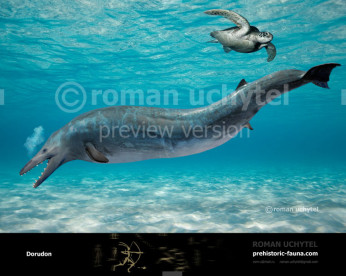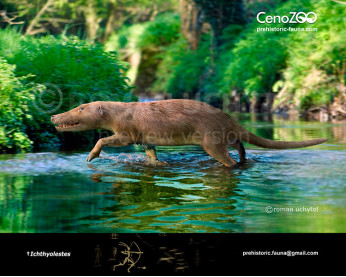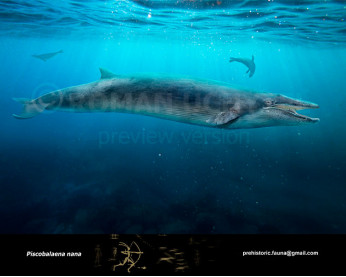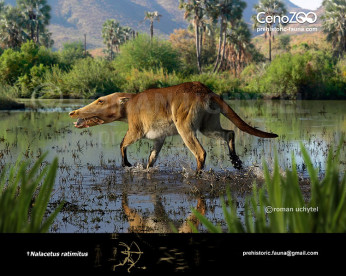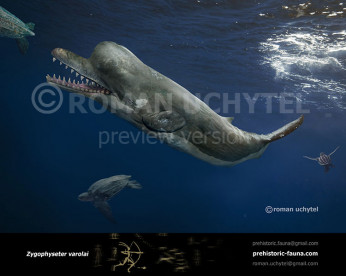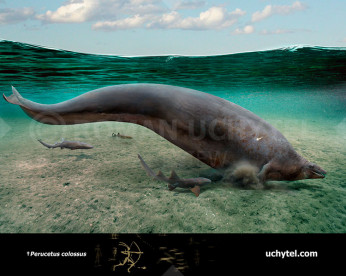Cynthiacetus
23112311
Cynthiacetus (†Cynthiacetus (Uhen 2005))
Order: Artiodactyla
Infraorder: Cetacea
Family: †Basilosauridae
Subfamily: †Dorudontinae
Time period: lived 40 to 39 million years ago in the Late Eocene (North and South America)
Size: Body length of 9 metres.
A typical representative: Cynthiacetus maxwelli
Cynthiacetus is an extinct genus of basilosaurid, was named after the town of Cynthia, Mississippi, close to where the type specimen for the species C. maxwelli was discovered.
The skull of C. maxwelli was similar in size and morphology to that of Basilosaurus cetoides, but Cynthiacetus lacked the elongated vertebrae of Basilosaurus.
The South American species C. peruvianus, the first archaeocete to be described on that continent, mainly differs from C. maxwelli in the number of cuspids in the lower premolars, but it also has the greatest numbers of thoracic vertebrae (20). The type specimen of C. peruvianus belonged to an adult individual measuring 9 m long.
Payment
You may use multiple payment methods to buy image such as credit cards, PayPal and bank transfer.
Cynthiacetus (†Cynthiacetus (Uhen 2005))
Order: Artiodactyla
Infraorder: Cetacea
Family: †Basilosauridae
Subfamily: †Dorudontinae
Time period: lived 40 to 39 million years ago in the Late Eocene (North and South America)
Size: Body length of 9 metres.
A typical representative: Cynthiacetus maxwelli
Cynthiacetus is an extinct genus of basilosaurid, was named after the town of Cynthia, Mississippi, close to where the type specimen for the species C. maxwelli was discovered.
The skull of C. maxwelli was similar in size and morphology to that of Basilosaurus cetoides, but Cynthiacetus lacked the elongated vertebrae of Basilosaurus.
The South American species C. peruvianus, the first archaeocete to be described on that continent, mainly differs from C. maxwelli in the number of cuspids in the lower premolars, but it also has the greatest numbers of thoracic vertebrae (20). The type specimen of C. peruvianus belonged to an adult individual measuring 9 m long.

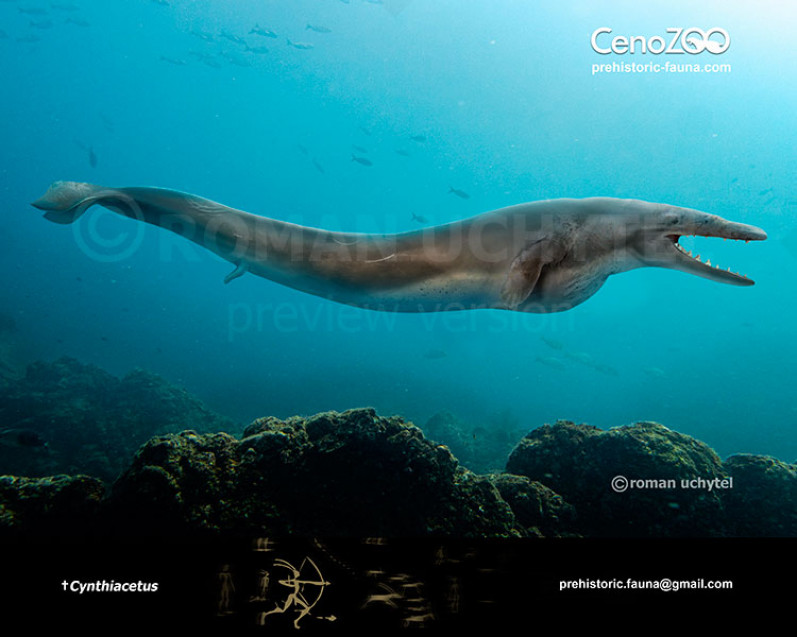
-797x638.jpg)

-70x56.jpg)
-346x277.jpg)
